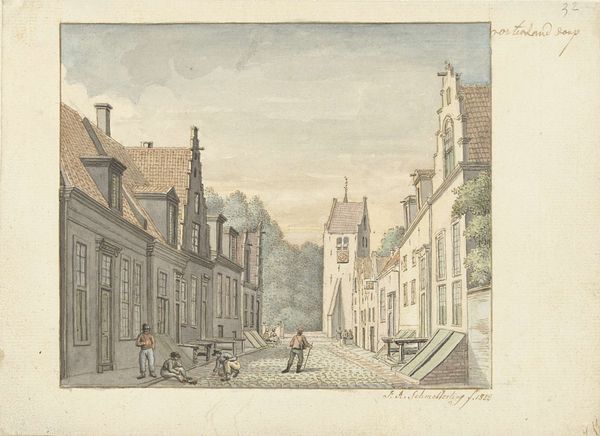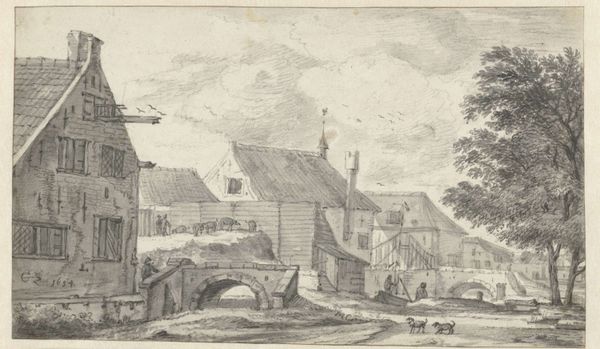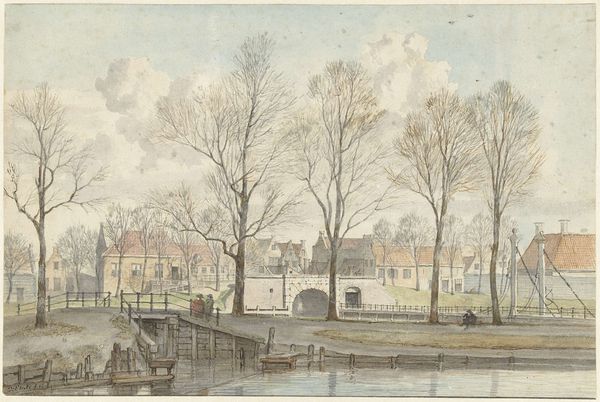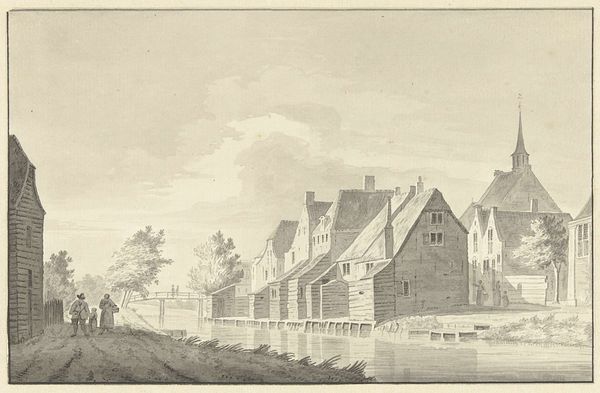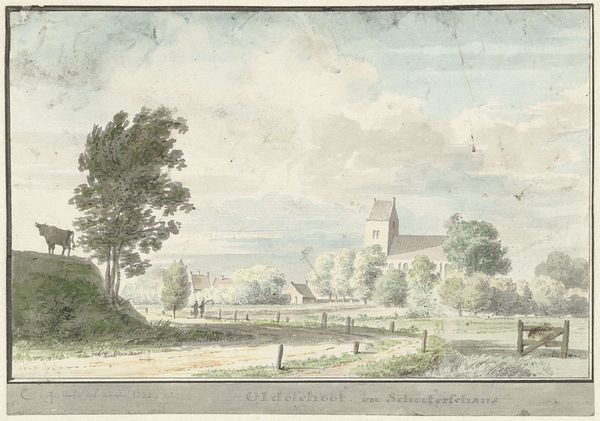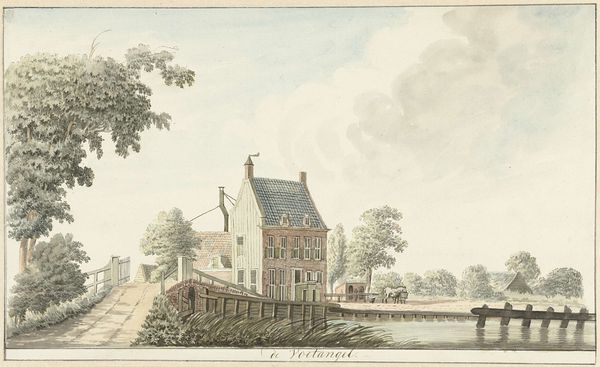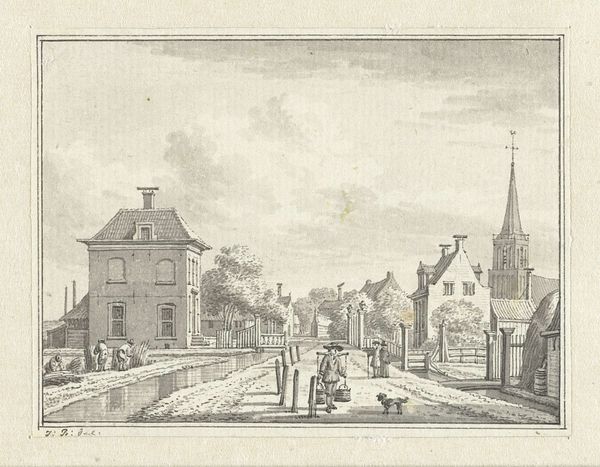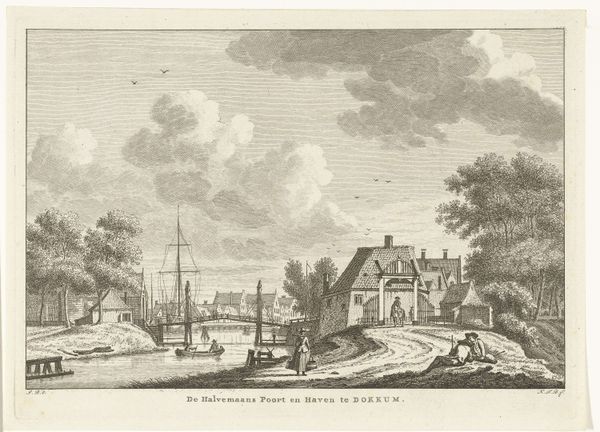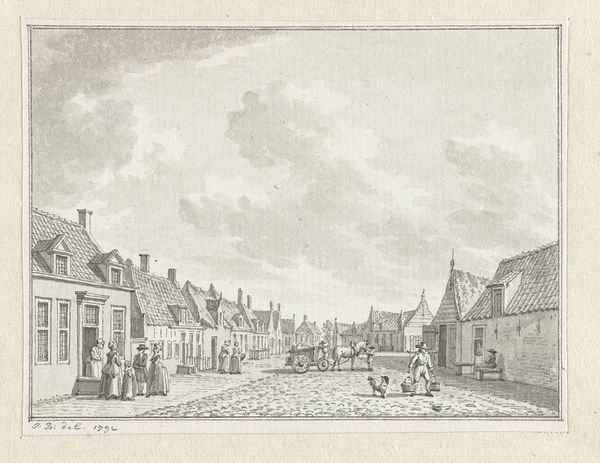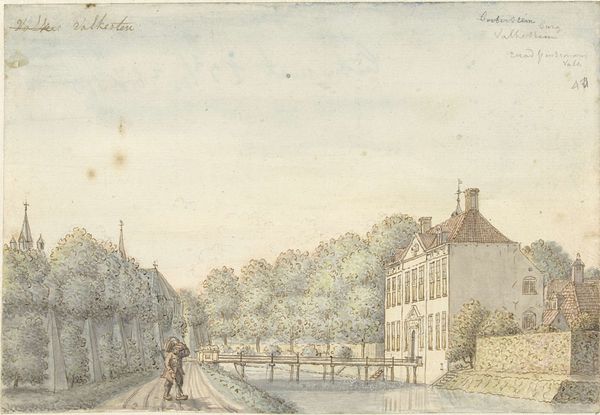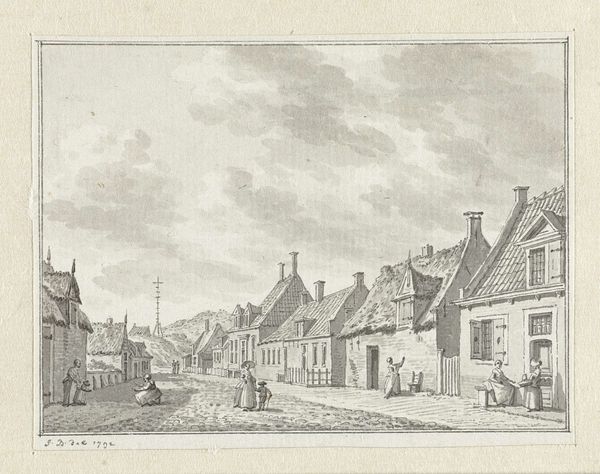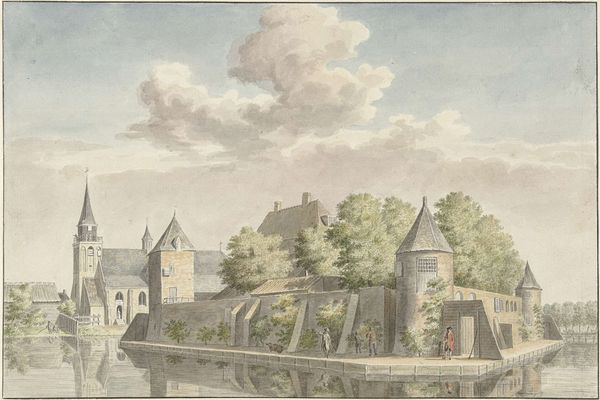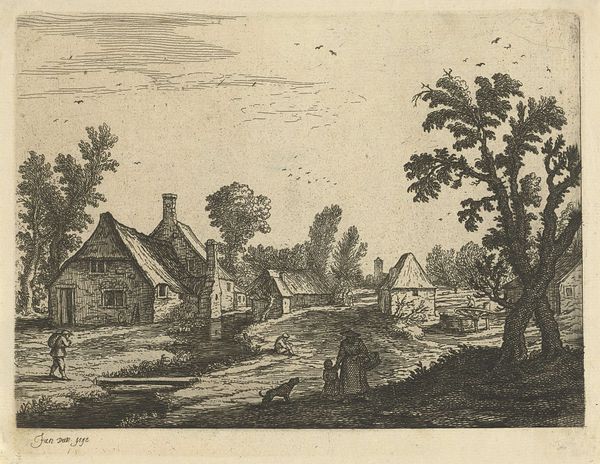
watercolor
#
landscape
#
watercolor
#
cityscape
#
genre-painting
#
realism
Dimensions: height 170 mm, width 241 mm
Copyright: Rijks Museum: Open Domain
Curator: This delicate watercolor is titled "Het dorp Molenaarsgraaf in de Alblasserwaard" and was created by Joseph Adolf Schmetterling sometime between 1761 and 1828. It presents a slice of Dutch life in the Alblasserwaard region. Editor: My immediate reaction is of a gentle calmness. The pale blues and muted greens create a quiet atmosphere. It feels like a memory, viewed through a softened lens. Curator: Yes, that resonates. These kinds of genre scenes became popular in the 18th century. It provides a glimpse into the everyday lives of the Dutch—but of course, with an idealized perspective shaped by the patrons and institutions commissioning them. Notice how even the architecture feels deliberately composed. Editor: It's interesting how the water dominates the composition. Water always carries symbolic weight, representing the unconscious and the flowing nature of time. The reflections are quite subtle; they're not simply replicating the buildings, but instead, creating distorted, ephemeral versions of them. Do you think that reflects societal views about changes occurring in the Netherlands during that era? Curator: That’s an interesting interpretation. From my perspective, though, these images served more of a civic purpose. Water was, and is, central to life in the Low Countries. Canals provided trade and sustenance, making water management and transport pivotal civic responsibilities. So, rather than representing an unconscious anxiety about transformation, the prominence of the canal underscores the core principles underpinning this society. Editor: I see what you mean. But it feels as though this landscape presents an interplay of social and psychic symbolism, capturing both the reality of the town and its emotional weight. The subdued palette gives a feeling of transience, a fragile, passing moment of history and memory, preserved in art. Curator: Well, that's a nice observation to tie everything together. Looking at this piece, it allows one to see a certain way of Dutch life, as perceived in the eighteenth century and, later, within collections around the world. Editor: Exactly, we project our own experiences onto the past through works of art, enriching our present understandings of history and ourselves.
Comments
No comments
Be the first to comment and join the conversation on the ultimate creative platform.
